- JST Home
- /
- Strategic Basic Research Programs
- /
 PRESTO
PRESTO- /
- project/
- Creation of Future Materials by Expanding Materials Exploration Space/
- [Future Materials] Year Started : 2023
[Future Materials] Year Started : 2023
Yusuke Ishigaki
Functional Design Based on Highly and Densely Aligned Cations
Grant No.:JPMJPR23Q1
Researcher
Yusuke Ishigaki
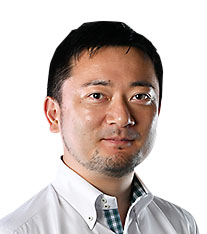
Associate Professor
Faculty of Science
Hokkaido University
Outline
In this project, I construct molecules with regularly arranged cationic moieties to create functions based on their topologies of highly and densely aligned cations. The aim of this project is to control the encapsulating ability and/or to construct unexplored π-conjugated molecules. Thus, this study would expand the scope of material exploration to the field of organic cationic species, which has been less explored compared to that of neutral molecules, and challenge the creation of future materials based on highly and densely aligned multicationic species.
Hiroki Uratani
Functional materials engineering based on understanding and control of quantum dynamics
Grant No.:JPMJPR23Q2
Researcher
Hiroki Uratani

PRESTO Researcher, Japan Science and Technology Agency
Outline
Quantum dynamics, that is, time-dependent quantum mechanics, has a potential to realize material functionalities and manipulations that are beyond the reach of conventional chemistry and materials science. For instance, use of quantum dynamical phenomena can enable extremely fast and efficient energy transport and fine control of chemical reaction via laser irradiation. In this study, using novel computational simulation techniques, I try to make these kind of functionalities and methods practical through computer-aided materials/reaction design based on the control of quantum dynamics.
Aki Kitaori
Development and control of antiferromagnets with broken time and space reversal symmetry
Grant No.:JPMJPR23Q3
Researcher
Aki Kitaori
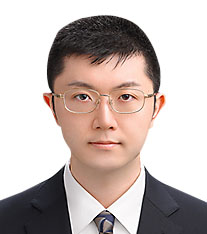
Research Associate
Research Center for Advanced Science and Technology
The University of Tokyo
Outline
The symmetry of systems is closely related to the selection rules for the response of materials, and its appropriate control has the potential to be an important key to realizing non-trivial physical properties. In this research, I will develop special antiferromagnetic materials with broken time and space reversal symmetry, thereby developing new material functions such as non-reciprocal response and topological properties, which will lead to the next generation of electronics and spintronics.
Yuzu Kobayashi
Development of Multifunctional Electrochemical Nanoprobes for Future-oriented Electrodes
Grant No.:JPMJPR23Q4
Researcher
Yuzu Kobayashi
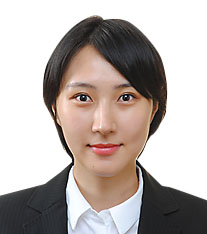
PRESTO Researcher, Japan Science and Technology Agency
Outline
Electrochemical reactions, including energy conversion reactions and the synthesis of chemical compounds, are fundamental technologies for society. In order to maximize the selectivity and efficiency of these electrochemical reactions, this research will expand its focus not only to the structure and materials of electrodes, but also to the ions in solution. This research aims to create future-oriented electrode materials with precisely designed “reaction-promoting ions”. In order to obtain design principles, I will develop a multi-functional probe microscopy technique that can track electrode structures, intermediates, products, and the effects of ions on them, with nanoscale spatial resolution.
Masaki Tahara
Creation of shape memory materials by diffusional phase transformation
Grant No.:JPMJPR23Q5
Researcher
Masaki Tahara
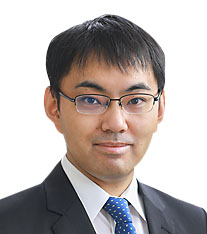
Associate Professor
Institute of Integrated Research
Institute of Science Tokyo
Outline
Shape memory effect has been considered to occur only in martensitic transformation without atomic diffusion. In this study, the aim is to create a “shape memory effect by diffusional transformation,” which overturns this common materials science knowledge. This new functionality is triggered by the disappearance of metastable phases that inhibit martensitic transformation.
Takayuki Nakamuro
Understanding Nonequilibrium Theory through Big Data Electron Microscopy Analysis
Grant No.:JPMJPR23Q6
Researcher
Takayuki Nakamuro
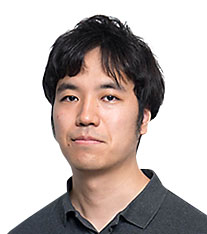
Project Associate Professor
Presidential Endowed Chair
The University of Tokyo
Outline
I utilize the visual power of imaging by transmission electron microscopy to unveil the intricate molecular dynamics behind scientific phenomena overlooked by conventional methods. My focus is on realizing big data electron microscopy analysis through purpose-built observation platforms. These platforms enable me to unravel the evolving interactions within molecules, assemblies, and crystalline or non-crystalline structures over time. This approach offers multi-tiered insights into these phenomena. Through the discovery of non-linear molecular dynamics, I aim to deepen our understanding of non-equilibrium processes. This foundational knowledge will significantly contribute to future material design. Moreover, I intend to showcase the significance of ‘The Power of Visualization’ in both materials science research and educational realms.
Shogo Hamada
Exploration of Programmable Materials Engineering through the Development of Hybrid DNA Fibers
Grant No.:JPMJPR23Q7
Researcher
Shogo Hamada
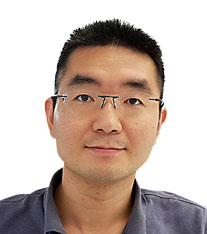
Assistant Professor
School of Computing
Institute of Science Tokyo
Outline
Versatile platform technologies towards “programmable materials engineering” will be established by a fusion of theory and experiments. “Hybrid DNA fibers”, a simple bulk material with new properties and functionalities, will be developed by creating composite materials. Data-driven, search-based design approach will be introduced by integrating various design parameters including sequence information. As a demonstration, hybrid DNA fibers with novel physical properties by mimicking spider silk and with dynamic programmability will be developed.
Yuya Haraguchi
The third-generation Kitaev materials
Grant No.:JPMJPR23Q8
Researcher
Yuya Haraguchi
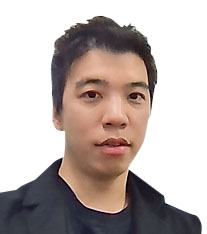
Assistant Professor
Faculty of Engineering
Tokyo University of Agriculture and Technology
Outline
In pursuit of elucidating Kitaev spin liquids to realize topologically robust quantum computation impervious to environmental perturbations, I’m pioneering an nonexploration realm based on solid-phase metathesis reactions. I challenge to integrate the concomitant by-products invariably engendered in solid-state metathesis, into the phase diagram as a novel orthogonal dimension. My ambition is a flexible access to metastable phases by establishing techniques to control the intricate degrees of freedom intrinsic to these by-products, encompassing variables like stoichiometry, enthalpy of formation, and ion-mixing entropy.
Takuo Minato
Precise sequential synthesis of giant hetero-multinuclear metal clusters with multiple elements
Grant No.:JPMJPR23Q9
Researcher
Takuo Minato

Assistant Professor
Graduate School of Advanced Science and Engineering
Hiroshima University
Outline
The purpose of this proposal is to develop a synthetic method that allows the precise assembly and integration of hetero-multinuclear metal clusters into a rigid multidentate ligand at the atomic level and to reveal structures and unique magnetic and catalytic properties of very large molecules. By establishing methods applicable to various types of metal cations and multidentate ligands, I also strive to systematically explore material properties in the mesoscopic regime, where conventional precise structural control has been extremely challenging.
Takeharu Yoshii
Innovation in Inorganic Solid Surface Analysis by Ultra-High Temperature Programmed Desorption
Grant No.:JPMJPR23QA
Researcher
Takeharu Yoshii
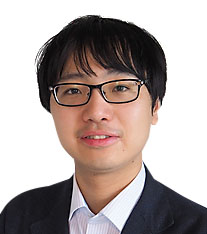
Associate Professor
Institute of Multidisciplinary Research for Advanced Materials
Tohoku University
Outline
In temperature programmed desorption analysis, a sample is heated at a constant rate, and the desorbed gas is analyzed by a mass spectrometer. This research aims to establish a new characterization method for defects and surfaces of inorganic materials based on our originally developed ultra-high temperature and high-sensitivity vacuum temperature programmed desorption analysis method. I will establish a new scientific theory on high-temperature thermal desorption processes from inorganic solids, and challenge to clarify chemical structures and interactions that are difficult to analyze by conventional nondestructive spectroscopic technique.
Masafumi Yoshio
Creation of Future Mechatronics Materials Leveraging Liquid Crystal Molecular Alignment
Grant No.:JPMJPR23QB
Researcher
Masafumi Yoshio
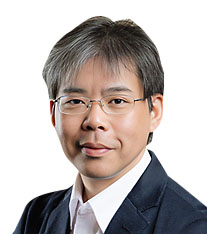
Group Leader
Research Center for Macromolecules and Biomaterials
National Institute for Materials Science
Outline
This research will create mechatronics composite materials with ion-conductive liquid crystals as their core component. The aim is to develop wearable, soft tactile, and stress sensor devices capable of achieving both high-speed vibration and high output, while also demonstrating self-repair and shape-memory functions. This study will undertake the challenge of visualizing ion movement and nanostructural changes through operand measurements of the devices under an electric field, ultimately elucidating the mechanism behind electromechanical conversion.













